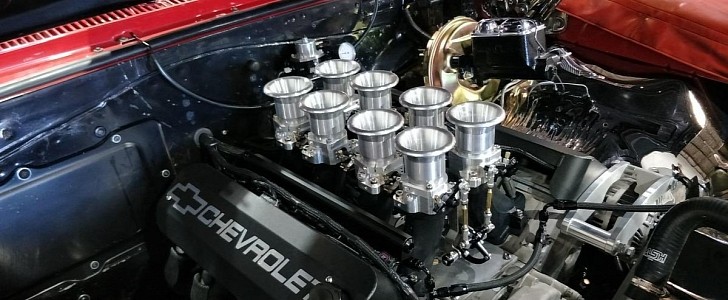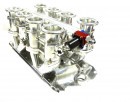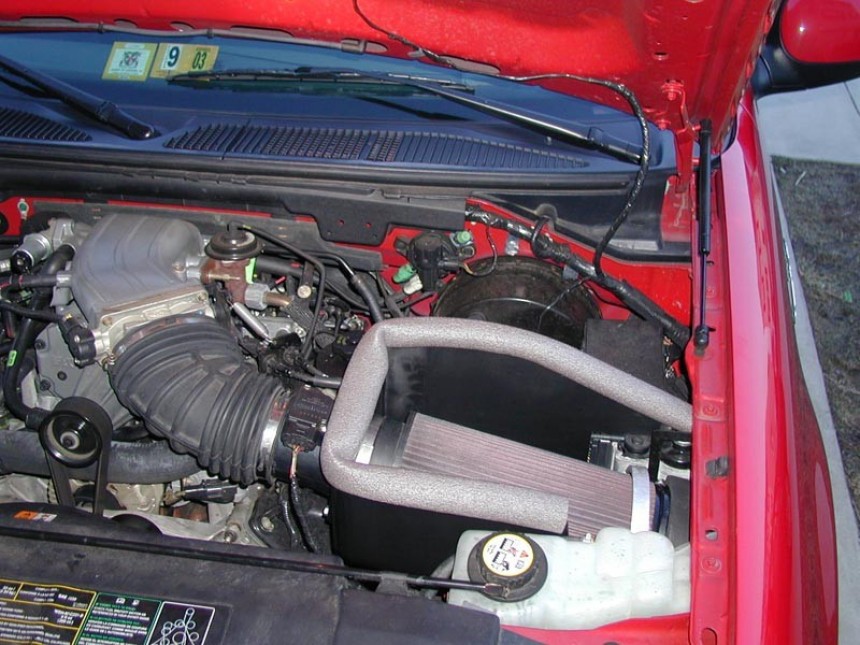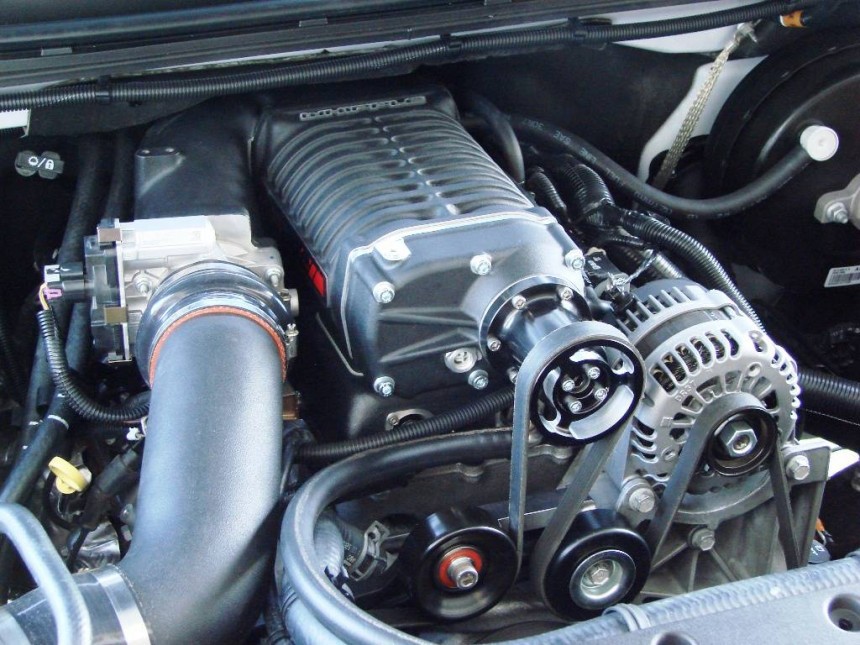Your car deserves a breath of fresh air, so let's dive into the aftermarket for a bit more power, efficiency, and beauty under the hood.
Before we consider any upgrades, your car's intake is dirty. Unfortunately, the air it breathes is not getting cleaner anytime soon. Tuning Month is about enjoying our cars, so you need to use a can of intake cleaner every few months to knock carbon and soot from the throttle body and the manifold.
With that out of the way, it seems that engineers have gotten bored. Automakers have been in an arms race to build unnecessary, convoluted paths that air must follow before reaching the cylinder heads. Starting at the top, paper filters must go. Cotton filters flow 30% more air, and they are easily cleaned for long life.
Most cone filters come with inserts to match the diameter of your intake tubing, but it is critical to shield them from engine heat. One way to accomplish this is by removing the front and rear hood seals. As long as your car moves forward, the engine heat is forced down at the firewall, keeping your filter cool. Find a friend with a laptop to monitor your intake temps to ensure you are getting cool air. If not, you may try another approach and think... inside the box. Literally!
The second method is to build an airbox. Use cardboard to make a template, then choose the suitable material. Metal will become heat-soaked, so many enthusiasts use plexiglass, acrylic, fiberglass, or even wood. By far, the most popular intake for budget-minded drivers is the ubiquitous office trashcan. This Ford Lightning intake consists of a filter and a trashcan, and it works!
With the filter taken care of, let's move to the tube. Every late-model car has resonators molded into the intake tube. Their goal is to cancel out unwanted noises under the hood and even in the exhaust. To give the air a straight shot, several DIY kits offer cut-to-fit tubing. Don't touch your airflow meter or its location. Just improve airflow in front and behind it.
This brings us to the throttle body. Odds are your throttle is the same one used on other cars and trucks. Going bigger is essential for some vehicles, but you can easily polish it for smooth airflow if the aftermarket doesn't support it. Also, don't forget to clean them twice a year for optimal performance. If your TB has coolant lines, now is a great time to loop them. Warming the intake is great for farm equipment, but it serves no purpose in performance cars.
You might wonder how any of this applies to carburetors, and it doesn't. If you prefer analog fuel delivery, we'll dive into them another day. Now that you are at the Throttle Body, it's time for electrical maintenance. So dig out your voltmeter to make sure your throttle position sensor, idle air controller, and throttle motor are within specs. If they are cheap, go ahead and replace them and keep the spares in your glove compartment.
Now we are at the intake manifold. Here, you can go big for high-rpm power or pick a design with long runners for low-rpm torque. The real dilemma is choosing one that suits your driving style. Intake spacers can be inserted between the throttle and the intake to add a few ccs of volume, and the best examples have nitrous-oxide ports if you feel frisky. It is at this point you will notice more growls from under the hood. Intake noises are intimidating to other drivers, and your exhaust will be more throaty also.
Here is where it comes down to your budget. An easy solution is to swap your factory piece for one from a heavier car/truck. My 5.3L Chevy loves the 6.2L intake from a Cadillac Escalade. However, here is where the road diverges. Race cars make use of individual throttles for each cylinder (shown above). Known as ITB, this intake is the ultimate for naturally aspirated cars, and it's perfect for aggressive cams and aftermarket heads.
Word to the wise: at this point, your computer won’t know what to do with so much air. Finding a tuner who is knowledgeable with your brand is a must. Also, don’t play with nitrous on a car you truly care about.
The ultimate intake is belt-driven. Superchargers have become efficient and compact. However, they generate a decent amount of heat, so we'll cover cooling before Summer arrives. Companies like Magnuson, Edelbrock, and Whipple have been so prolific that Lotus made it standard equipment. But, to fully utilize one, it is time to consider a new camshaft. Until then, spend a few minutes under the hood, and stay with us for more tuning insights!
With that out of the way, it seems that engineers have gotten bored. Automakers have been in an arms race to build unnecessary, convoluted paths that air must follow before reaching the cylinder heads. Starting at the top, paper filters must go. Cotton filters flow 30% more air, and they are easily cleaned for long life.
Most cone filters come with inserts to match the diameter of your intake tubing, but it is critical to shield them from engine heat. One way to accomplish this is by removing the front and rear hood seals. As long as your car moves forward, the engine heat is forced down at the firewall, keeping your filter cool. Find a friend with a laptop to monitor your intake temps to ensure you are getting cool air. If not, you may try another approach and think... inside the box. Literally!
The second method is to build an airbox. Use cardboard to make a template, then choose the suitable material. Metal will become heat-soaked, so many enthusiasts use plexiglass, acrylic, fiberglass, or even wood. By far, the most popular intake for budget-minded drivers is the ubiquitous office trashcan. This Ford Lightning intake consists of a filter and a trashcan, and it works!
This brings us to the throttle body. Odds are your throttle is the same one used on other cars and trucks. Going bigger is essential for some vehicles, but you can easily polish it for smooth airflow if the aftermarket doesn't support it. Also, don't forget to clean them twice a year for optimal performance. If your TB has coolant lines, now is a great time to loop them. Warming the intake is great for farm equipment, but it serves no purpose in performance cars.
You might wonder how any of this applies to carburetors, and it doesn't. If you prefer analog fuel delivery, we'll dive into them another day. Now that you are at the Throttle Body, it's time for electrical maintenance. So dig out your voltmeter to make sure your throttle position sensor, idle air controller, and throttle motor are within specs. If they are cheap, go ahead and replace them and keep the spares in your glove compartment.
Now we are at the intake manifold. Here, you can go big for high-rpm power or pick a design with long runners for low-rpm torque. The real dilemma is choosing one that suits your driving style. Intake spacers can be inserted between the throttle and the intake to add a few ccs of volume, and the best examples have nitrous-oxide ports if you feel frisky. It is at this point you will notice more growls from under the hood. Intake noises are intimidating to other drivers, and your exhaust will be more throaty also.
Word to the wise: at this point, your computer won’t know what to do with so much air. Finding a tuner who is knowledgeable with your brand is a must. Also, don’t play with nitrous on a car you truly care about.
The ultimate intake is belt-driven. Superchargers have become efficient and compact. However, they generate a decent amount of heat, so we'll cover cooling before Summer arrives. Companies like Magnuson, Edelbrock, and Whipple have been so prolific that Lotus made it standard equipment. But, to fully utilize one, it is time to consider a new camshaft. Until then, spend a few minutes under the hood, and stay with us for more tuning insights!










